John P. Lowe, Kirk Peterson012457551X, 9780124575516
Table of contents :
Cover Page……Page 1
Title Page……Page 4
ISBN 012457551X……Page 5
2 Quantum Mechanics of Some Simple Systems……Page 10
6 Postulates and Theorems of Quantum Mechanics……Page 11
8 The Simple Hückel Method and Applications……Page 12
11 The SCF-LCAO-MO Method and Extensions……Page 13
14 Qualitative Molecular Orbital Theory……Page 14
Appendixes, Index……Page 15
Preface to the Third Edition……Page 18
Preface to the Second Edition……Page 20
Preface to the First Edition……Page 22
1-2.A Traveling Waves……Page 24
1-2.B Standing Waves……Page 26
1-3 The Classical Wave Equation……Page 27
1-4 Standing Waves in a Clamped String……Page 30
1-5 Light as an Electromagnetic Wave……Page 32
1-6 The Photoelectric Effect……Page 33
1-7 The Wave Nature of Matter……Page 37
1-8 A Diffraction Experiment with Electrons……Page 39
1-9 Schrödinger’s Time-Independent Wave Equation……Page 42
1-10 Conditions on……Page 44
1-11 Some Insight into the Schrödinger Equation……Page 45
1-12 Summary……Page 46
1-12.A Problems……Page 47
Multiple Choice Questions……Page 48
Reference……Page 49
㈀ⴀ 吀栀攀 倀愀爀琀椀挀氀攀 椀渀 愀 伀渀攀ⴀ䐀椀洀攀渀猀椀漀渀愀氀 ᰠ䈀漀砀ᴠ……Page 50
2-2.A Energies……Page 53
2-2.B Wavefunctions……Page 55
2-2.C Symmetry of Wave functions……Page 58
2-2.D Orthogonality of Wave functions……Page 60
2-3 The Particle in a One-Dimensional “Box” with One Finite Wall……Page 61
㈀ⴀ㐀 吀栀攀 倀愀爀琀椀挀氀攀 椀渀 愀渀 䤀渀昀椀渀椀琀攀 ᰠ䈀漀砀ᴠ 眀椀琀栀 愀 䘀椀渀椀琀攀 䌀攀渀琀爀愀氀 䈀愀爀爀椀攀爀……Page 67
2-5 The Free Particle in One Dimension……Page 70
2-6 The Particle in a Ring of Constant Potential……Page 73
2-7 The Particle in a Three-Dimensional Box: Separation of Variables……Page 76
2-8 The Scattering of Particles in One Dimension……Page 79
2-9 Summary……Page 82
2-9.A Problems……Page 83
Multiple Choice Questions……Page 88
References……Page 91
3-2 Some Characteristics of the Classical One-Dimensional Harmonic Oscillator……Page 92
3-3 The Quantum-Mechanical Harmonic Oscillator……Page 95
3-4.B Establishing the Correct Asymptotic Behavior……Page 97
3-4.C The Differential Equation for……Page 98
3-4.D Representing f as a Power Series……Page 99
3-4.E Establishing a Recursion Relation for……Page 100
3-4.F Preventing f(y) from Dominating the Asymptotic Behavior……Page 101
3-4.G The Nature of the Energy Spectrum……Page 102
3-4.H Nature of the Wave functions……Page 103
3-4.I Orthogonality and Normalization……Page 104
3-5 Quantum-Mechanical Average Value of the Potential Energy……Page 106
3-6 Vibrations of Diatomic Molecules……Page 107
3-7.A Problems……Page 108
Multiple Choice Questions……Page 111
4-1.A The Schrödinger Equation……Page 112
4-1.B The Nature of the Eigenvalues……Page 115
4-1.C The Lowest-Energy Wavefunction……Page 116
4-1.D Quantum Numbers and Nomenclature……Page 120
4-1.E Nature of the Higher-Energy Solutions……Page 121
4-2 Separation of Variables……Page 128
㐀ⴀ㌀⸀䄀 吀栀攀 ꘃ 䔀焀甀愀琀椀漀渀……Page 129
㐀ⴀ㌀⸀䈀 吀栀攀 頃 䔀焀甀愀琀椀漀渀……Page 130
4-3.C The R Equation……Page 131
4-4 Atomic Units……Page 132
4-5 Angular Momentum and Spherical Harmonics……Page 133
4-6 Angular Momentum and Magnetic Moment……Page 138
㐀ⴀ㜀 䄀渀最甀氀愀爀 䴀漀洀攀渀琀甀洀 椀渀 䴀漀氀攀挀甀氀愀爀 刀漀琀愀琀椀漀渀ᐠ吀栀攀 刀椀最椀搀 刀漀琀漀爀……Page 140
4-8 Summary……Page 142
4-8.A Problems……Page 143
Multiple Choice Questions……Page 148
References……Page 149
5-1 The Independent Electron Approximation……Page 150
5-2 Simple Products and Electron Exchange Symmetry……Page 152
5-3 Electron Spin and the Exclusion Principle……Page 155
5-4 Slater Determinants and the Pauli Principle……Page 160
5-5 Singlet and Triplet States for the 1s2s Configuration of Helium……Page 161
5-6 The Self-Consistent Field, Slater-Type Orbitals, and the Aufbau Principle……Page 167
5-7 Electron Angular Momentum in Atoms……Page 172
5-7.A Combined Spin-Orbital Angular Momentum for One-Electron Ions……Page 173
5-7.B Spin-Orbital Angular Momentum for Many-Electron Atoms……Page 175
5-8 Overview……Page 182
5-8.A Problems……Page 183
Multiple Choice Questions……Page 187
References……Page 188
6-2 The Wavefunction Postulate……Page 189
6-3 The Postulate for Constructing Operators……Page 190
6-4 The Time-Dependent Schrödinger Equation Postulate……Page 191
6-5 The Postulate Relating Measured Values to Eigenvalues……Page 192
6-7 Hermitian Operators……Page 194
6-8 Proof That Eigenvalues of Hermitian Operators Are Real……Page 195
6-9 Proof That Nondegenerate Eigenfunctions of a Hermitian Operator Form an Orthogonal Set……Page 196
6-10 Demonstration That All Eigenfunctions of a Hermitian Operator May Be Expressed as an Orthonormal Set……Page 197
6-11 Proof That Commuting Operators Have Simultaneous Eigenfunctions……Page 198
6-12 Completeness of Eigenfunctions of a Hermitian Operator……Page 199
6-15 Measurement, Commutators, and Uncertainty……Page 201
6-16 Time-Dependent States……Page 203
6-17 Summary……Page 208
6-17.A Problems……Page 209
References……Page 212
7-1 The Spirit of the Method……Page 213
7-2 Nonlinear Variation: The Hydrogen Atom……Page 214
7-3 Nonlinear Variation: The Helium Atom……Page 217
7-4 Linear Variation: The Polarizability of the Hydrogen Atom……Page 220
7-5 Linear Combination of Atomic Orbitals: The H2+ Molecule-Ion……Page 229
7-6 Molecular Orbitals of Homonuclear Diatomic Molecules……Page 243
7-7 Basis Set Choice and the Variational Wavefunction……Page 254
7-8 Beyond the Orbital Approximation……Page 256
7-8.A Problems……Page 258
Multiple Choice Questions……Page 264
References……Page 265
㠀ⴀ㈀ 吀栀攀 䄀猀猀甀洀瀀琀椀漀渀 漀昀 쌃ⴀ쀃 匀攀瀀愀爀愀戀椀氀椀琀礀……Page 267
㠀ⴀ㌀ 吀栀攀 䤀渀搀攀瀀攀渀搀攀渀琀 쀃ⴀ䔀氀攀挀琀爀漀渀 䄀猀猀甀洀瀀琀椀漀渀……Page 269
8-4.A Identifying the Basis Atomic Orbitals and Constructing a Determinant……Page 270
㠀ⴀ㐀⸀䈀 吀栀攀 儀甀愀渀琀椀琀礀 쌃……Page 271
8-4.E Further Manipulation of the Determinant……Page 272
8-5 Solving the HMO Determinantal Equation for Orbital Energies……Page 273
8-6 Solving for the Molecular Orbitals……Page 274
8-7 The Cyclopropenyl System: Handling Degeneracies……Page 276
8-8 Charge Distributions from HMOs……Page 279
8-9 Some Simplifying Generalizations……Page 282
8-10.A Ethylene (Even Alternant)……Page 286
8-10.B Butadiene (Even Alternant)……Page 287
8-10.C Cyclobutadiene (Even Alternant)……Page 288
8-10.D Benzene (Even Alternant)……Page 290
8-11 Summary: The Simple HMO Method for Hydrocarbons……Page 291
8-12 Relation Between Bond Order and Bond Length……Page 292
㠀ⴀ㌀ 쀃ⴀ䔀氀攀挀琀爀漀渀 䐀攀渀猀椀琀椀攀猀 愀渀搀 䔀氀攀挀琀爀漀渀 匀瀀椀渀 刀攀猀漀渀愀渀挀攀 䠀礀瀀攀爀昀椀渀攀 匀瀀氀椀琀琀椀渀最 䌀漀渀猀琀愀渀琀猀……Page 294
8-14 Orbital Energies and Oxidation-Reduction Potentials……Page 298
8-15 Orbital Energies and Ionization Energies……Page 301
㠀ⴀ㘀 쀃ⴀ䔀氀攀挀琀爀漀渀 䔀渀攀爀最礀 愀渀搀 䄀爀漀洀愀琀椀挀椀琀礀……Page 302
8-17 Extension to Heteroatomic Molecules……Page 307
㠀ⴀ㠀 匀攀氀昀ⴀ䌀漀渀猀椀猀琀攀渀琀 嘀愀爀椀愀琀椀漀渀猀 漀昀 넃 愀渀搀 눃……Page 310
8-19 HMO Reaction Indices……Page 312
8-20 Conclusions……Page 318
8-20.A Problems……Page 319
Multiple Choice Questions……Page 328
References……Page 329
9-2.A Definitions……Page 331
9-2.B Complex Conjugate, Transpose, and Hermitian Adjoint of a Matrix……Page 332
9-2.C Addition and Multiplication of Matrices and Vectors……Page 333
9-2.E Complex Conjugate, Inverse, and Transpose of a Product of Matrices……Page 334
9-2.F A Geometric Model……Page 335
9-2.G Similarity Transformations……Page 337
9-3 Matrix Formulation of the Linear Variation Method……Page 338
9-4 Solving the Matrix Equation……Page 340
9-5.A Problems……Page 343
References……Page 346
10-1.B The Basis Set……Page 347
10-1.C The Overlap Matrix……Page 348
10-1.D The Hamiltonian Matrix……Page 349
10-1.E The Eigenvalues and Eigenvectors……Page 351
10-1.F The Total Energy……Page 354
10-1.G Fixing the Parameter……Page 356
10-2 Mulliken Populations……Page 358
10-3 Extended Hückel Energies and Mulliken Populations……Page 361
10-4 Extended Hückel Energies and Experimental Energies……Page 363
10-4.A Problems……Page 365
References……Page 370
11-1 Ab Initio Calculations……Page 371
11-3 The Form of theWavefunction……Page 372
11-5 The LCAO-MO-SCF Equation……Page 373
11-6 Interpretation of the LCAO-MO-SCF Eigenvalues……Page 374
11-7 The SCF Total Electronic Energy……Page 375
11-8 Basis Sets……Page 376
11-10 Correlation Energy……Page 380
ⴀ 䬀漀漀瀀洀愀渀猀ᤠ 吀栀攀漀爀攀洀……Page 381
11-12 Configuration Interaction……Page 383
ⴀ㌀ 匀椀稀攀 䌀漀渀猀椀猀琀攀渀挀礀 愀渀搀 琀栀攀 䴀氀氀攀爀ጠ倀氀攀猀猀攀琀 愀渀搀 䌀漀甀瀀氀攀搀 䌀氀甀猀琀攀爀 吀爀攀愀琀洀攀渀琀猀 漀昀 䌀漀爀爀攀氀愀琀椀漀渀……Page 388
11-14 Multideterminant Methods……Page 390
11-15 Density Functional Theory Methods……Page 391
11-16 Examples of Ab Initio Calculations……Page 393
11-17 Approximate SCF-MO Methods……Page 407
11-17.A Problems……Page 409
References……Page 411
12-2 Formal Development of the Theory for Nondegenerate States……Page 414
12-3.A Description of the System……Page 419
12-3.B The Energy to First Order……Page 420
㈀ⴀ㌀⸀䌀 吀栀攀 䘀椀爀猀琀ⴀ伀爀搀攀爀 䌀漀爀爀攀挀琀椀漀渀 琀漀 젃……Page 422
12-3.E The Calculation of W1(2)……Page 424
㈀ⴀ㌀⸀䘀 吀栀攀 䔀昀昀攀挀琀猀 漀昀 琀栀攀 倀攀爀琀甀爀戀愀琀椀漀渀 漀渀 젃㈀……Page 425
12-4 The Ground-State Energy to First-Order of Heliumlike Systems……Page 426
12-5 Perturbation at an Atom in the Simple Hückel MO Method……Page 429
12-6 Perturbation Theory for a Degenerate State……Page 432
12-7 Polarizability of the Hydrogen Atom in the n=2 States……Page 433
12-8 Degenerate-Level Perturbation Theory by Inspection……Page 435
12-9 Interaction Between Two Orbitals: An Important Chemical Model……Page 437
12-10 Connection Between Time-Independent Perturbation Theory and Spectroscopic Selection Rules……Page 440
12-10.A Problems……Page 443
Multiple Choice Questions……Page 450
References……Page 451
13-2 An Elementary Example……Page 452
13-3 Symmetry Point Groups……Page 454
13-4 The Concept of Class……Page 457
13-5 Symmetry Elements and Their Notation……Page 459
13-6 Identifying the Point Group of a Molecule……Page 464
13-7 Representations for Groups……Page 466
13-8 Generating Representations from Basis Functions……Page 469
13-9 Labels for Representations……Page 474
13-10 Some Connections Between the Representation Table and Molecular Orbitals……Page 475
13-11 Representations for Cyclic and Related Groups……Page 476
13-12 Orthogonality in Irreducible Inequivalent Representations……Page 479
13-13 Characters and Character Tables……Page 481
13-14 Using Characters to Resolve Reducible Representations……Page 485
13-15 Identifying Molecular Orbital Symmetries……Page 486
13-16 Determining in Which Molecular Orbital an Atomic Orbital Will Appear……Page 488
13-17 Generating Symmetry Orbitals……Page 490
13-18 Hybrid Orbitals and Localized Orbitals……Page 493
13-19 Symmetry and Integration……Page 495
13-19.A Problems……Page 499
Multiple Choice Questions……Page 504
References……Page 506
14-2 Hierarchy in Molecular Structure and in Molecular Orbitals……Page 507
14-3 H2+ Revisited……Page 508
14-4 H2: Comparisons with H2+……Page 511
14-6 Application of QMOT Rules to Homonuclear Diatomic Molecules……Page 513
14-7 Shapes of Polyatomic Molecules: Walsh Diagrams……Page 518
14-8 Frontier Orbitals……Page 528
14-9 Qualitative Molecular Orbital Theory of Reactions……Page 531
14-9.A Problems……Page 544
References……Page 547
15-2 The Free Particle in One Dimension……Page 549
15-3 The Particle in a Ring……Page 552
15-4 Benzene……Page 553
㔀ⴀ㔀 䜀攀渀攀爀愀氀 䘀漀爀洀 漀昀 伀渀攀ⴀ䔀氀攀挀琀爀漀渀 伀爀戀椀琀愀氀猀 椀渀 倀攀爀椀漀搀椀挀 倀漀琀攀渀琀椀愀氀猀ᐠ䈀氀漀挀栀ᤠ猀 吀栀攀漀爀攀洀……Page 556
15-7 An Example: Polyacetylene with Uniform Bond Lengths……Page 560
15-8 Electrical Conductivity……Page 569
㔀ⴀ㤀 倀漀氀礀愀挀攀琀礀氀攀渀攀 眀椀琀栀 䄀氀琀攀爀渀愀琀椀渀最 䈀漀渀搀 䰀攀渀最琀栀猀ᐠ倀攀椀攀爀氀猀ᤠ 䐀椀猀琀漀爀琀椀漀渀……Page 570
15-10 Electronic Structure of All-Trans Polyacetylene……Page 574
15-11 Comparison of EHMO and SCF Results on Polyacetylene……Page 575
㔀ⴀ㈀ 䔀昀昀攀挀琀猀 漀昀 䌀栀攀洀椀挀愀氀 匀甀戀猀琀椀琀甀琀椀漀渀 漀渀 琀栀攀 쀃 䈀愀渀搀猀……Page 577
㔀ⴀ㌀ 倀漀氀礀ⴀ倀愀爀愀瀀栀攀渀礀氀攀渀攀ᐠ䄀 刀椀渀最 倀漀氀礀洀攀爀……Page 578
15-15 Two-Dimensional Periodicity and Vectors in Reciprocal Space……Page 585
㔀ⴀ㘀 倀攀爀椀漀搀椀挀椀琀礀 椀渀 吀栀爀攀攀 䐀椀洀攀渀猀椀漀渀猀ᐠ䜀爀愀瀀栀椀琀攀……Page 588
15-17 Summary……Page 599
15-17.A Problems……Page 601
References……Page 603
Appendix 1 Useful Integrals……Page 605
Appendix 2 Determinants……Page 607
A2-1 Use of Determinants in Linear Homogeneous Equations……Page 608
A2-2 Problems……Page 609
Appendix 3 Evaluation of the Coulomb Repulsion Integral Over 1s AOs……Page 610
A4-2 The Classical Expressions for Angular Momentum……Page 614
A4-3 The Quantum-Mechanical Operators……Page 615
A4-4 Commutation of Angular Momentum Operators with Hamiltonian Operators and with Each Other……Page 616
A4-5 Determining Eigenvalues for L2 and Lz……Page 618
Reference……Page 623
A5-1 Pairing of Roots and Relation Between Coefficients for Alternant Systems……Page 624
A5-3 A Simple Method for Generating Nonbonding MOs……Page 625
Reference……Page 627
Appendix 6 Hückel Molecular Orbital Energies, Coefficients, Electron Densities, and Bond Orders for Some Simple Molecules……Page 628
A7-1 The Expansion of E in Terms of Integrals over MOs……Page 637
䄀㜀ⴀ㈀ 䐀攀爀椀瘀愀琀椀漀渀 漀昀 琀栀攀 䠀愀爀琀爀攀攀ጠ䘀漀挀欀 䔀焀甀愀琀椀漀渀猀……Page 642
References……Page 646
A8-1 Atoms……Page 647
A8-2 Diatomic Molecules……Page 650
A8-2.1 Problems……Page 651
Appendix 9 Bra-ket Notation……Page 652
Appendix 10 Values of Some Useful Constants and Conversion Factors……Page 654
A11-1 Flow Scheme for Group Symbols……Page 659
A11-2 Meaning of Labels for Representations……Page 660
A11-3.A Special High-Symmetry Groups:……Page 661
A11-3.C The S2n Groups……Page 664
A11-3.D The Cn Groups……Page 665
A11-3.E The Cnv Groups……Page 666
A11-3.F The Cnh Groups……Page 667
A11-3.G The Dn Groups……Page 669
A11-3.H The Dnd Groups……Page 670
A11-3.I The Dnh Groups……Page 671
Chapter 3……Page 674
Chapter 7……Page 675
Chapter 15……Page 676
Chapter 2……Page 677
Chapter 3……Page 681
Chapter 4……Page 682
Chapter 5……Page 685
Chapter 6……Page 687
Chapter 7……Page 689
Chapter 8……Page 692
Chapter 9……Page 695
Chapter 10……Page 697
Chapter 11……Page 698
Chapter 12……Page 699
Chapter 13……Page 704
Chapter 14……Page 706
Chapter 15……Page 708
Appendix 4……Page 712
References……Page 713
A……Page 714
C……Page 715
E……Page 716
F……Page 717
H……Page 718
I……Page 719
M……Page 720
O……Page 721
P……Page 722
R……Page 723
S……Page 724
W……Page 725
Z……Page 726
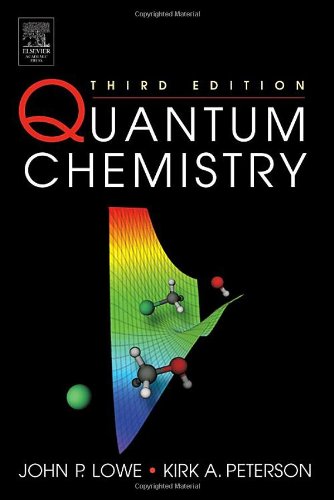
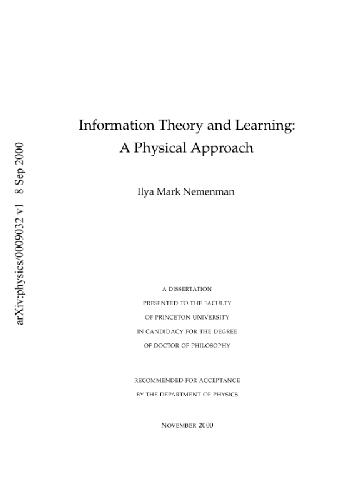
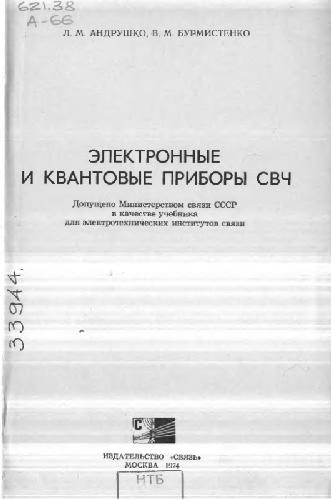
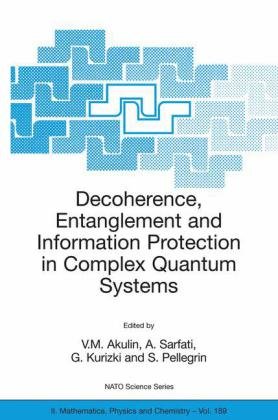
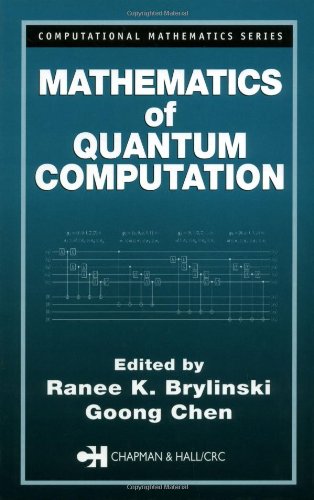


Reviews
There are no reviews yet.